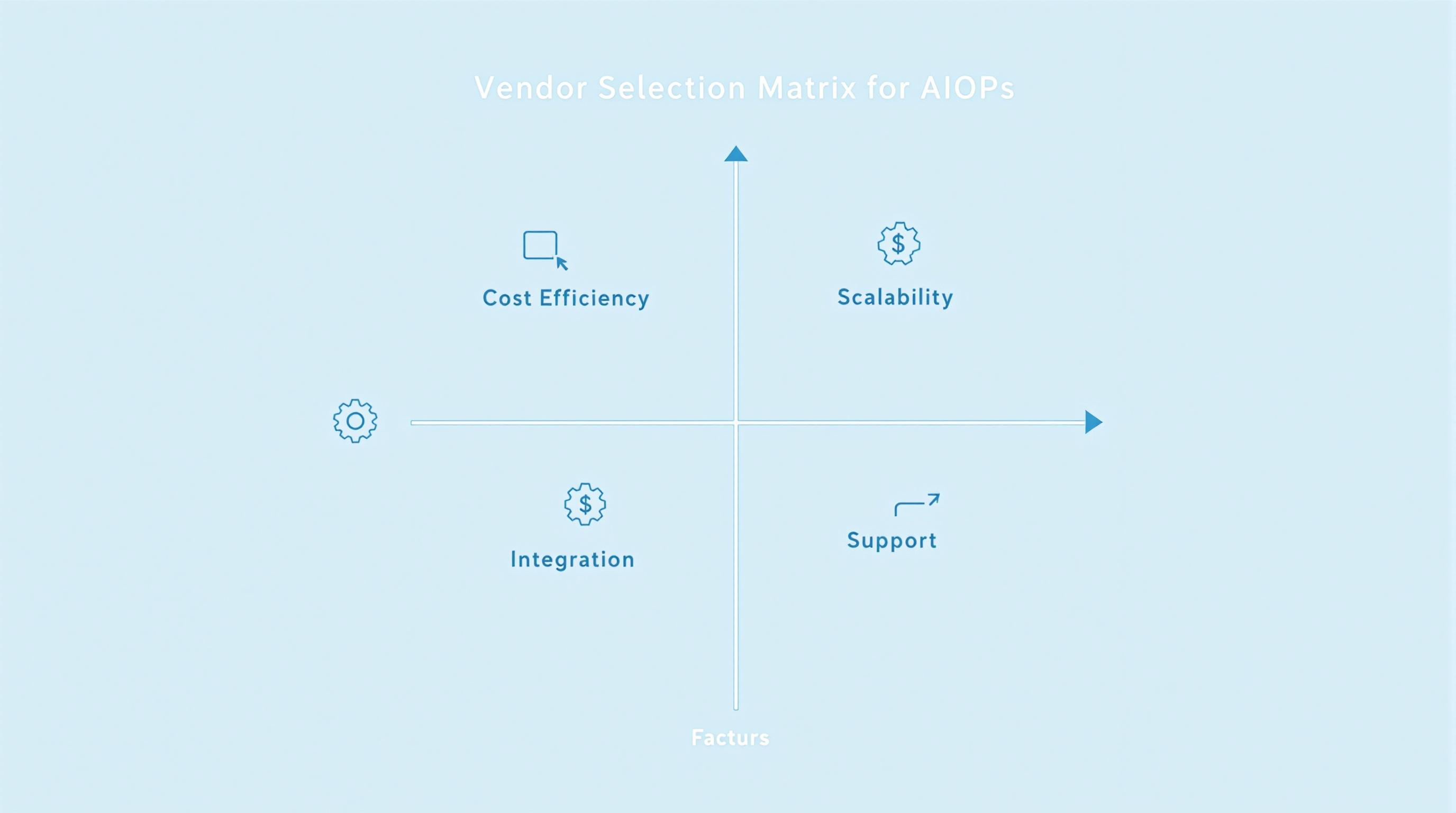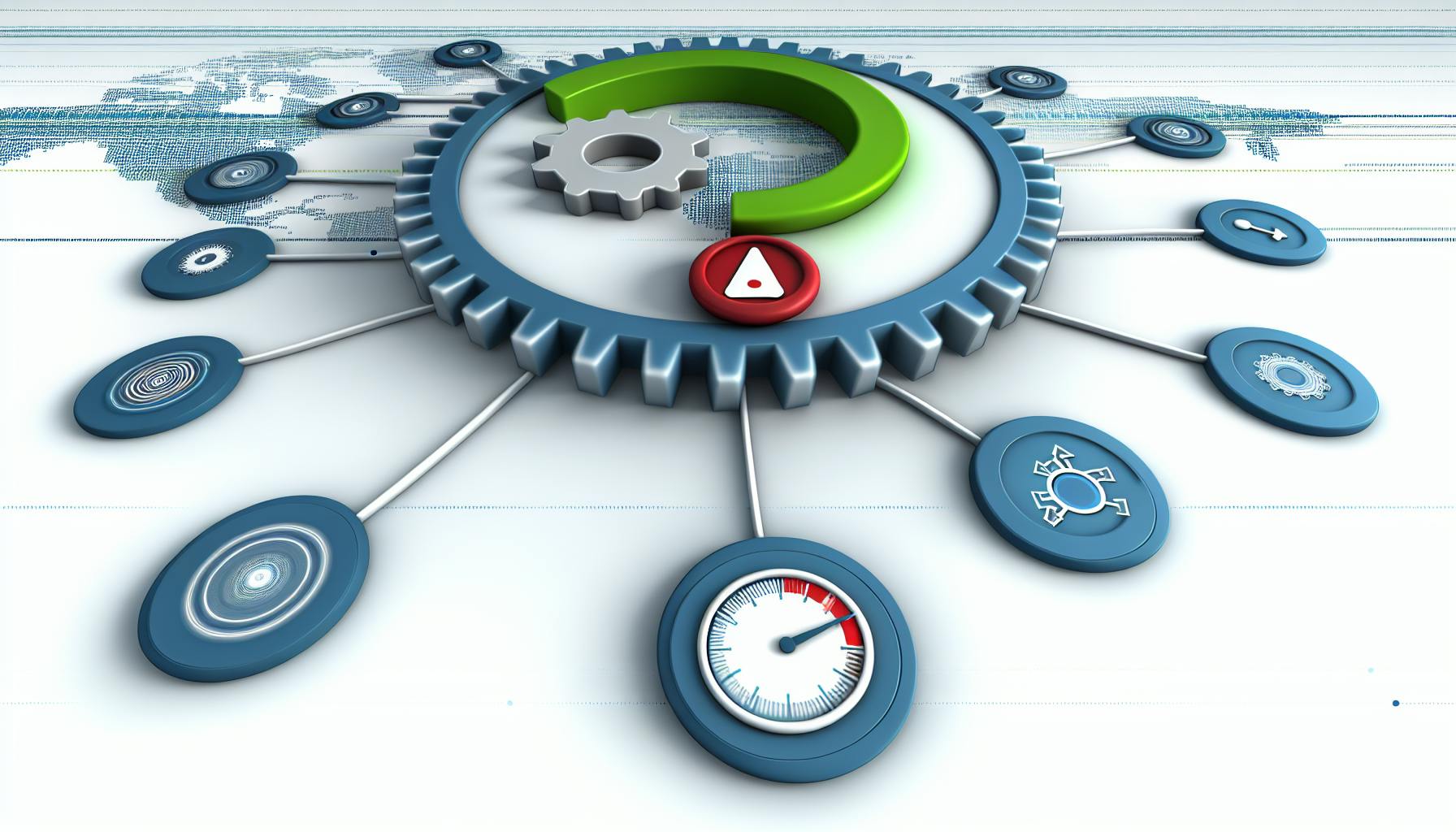Edge computing moves data processing closer to the source, offering faster processing and lower costs. However, IT teams face 5 key challenges:
- Network Issues
- Security and Privacy Risks
- Data Storage Challenges
- Resource Limits and Scaling
- Setup and Management Issues
Here's a quick overview of the challenges and solutions:
| Challenge | Solutions |
|---|---|
| Network Issues | Edge caching, CDNs, backup connections, offline features |
| Security Risks | Strong encryption, multi-factor authentication, secure data transfers, threat monitoring |
| Data Storage | Data aggregation, compression, prioritization, hybrid edge-cloud storage |
| Resource Limits | Edge management tools, workload balancing, resource optimization, fog computing |
| Setup & Management | Edge control platforms, automated device setup, common standards, remote management |
By addressing these challenges, organizations can harness the benefits of edge computing while maintaining efficient IT operations.
Related video from YouTube
1. Network Issues
Edge computing moves data processing closer to where data is created, but this can cause network problems for IT teams. Keeping edge devices connected is key for good performance and data accuracy.
How Network Problems Affect IT Systems
Poor network connections can hurt IT systems in edge computing:
- Data Loss: Bad connections can lead to incomplete data transfers
- Slowdowns: Poor networks can make systems slower, canceling out the speed benefits of edge computing
- Outages: Network failures can make edge devices unreachable
- Unpredictable Performance: Changing network conditions can make systems behave oddly
Solutions
IT teams can use these methods to improve network connections for edge computing:
Edge Caching
Edge caching stores often-used data close to users or devices:
- Makes data access faster
- Helps during network congestion
- Allows some apps to work offline
Content Delivery Networks (CDNs)
CDNs spread data across different locations:
- Serve content from the closest location
- Reduce load on main servers
- Help systems keep working if one network fails
Backup Connections
Having more than one network connection keeps systems running:
- Use different internet providers or connection types
- Set up automatic switching between connections
- Make sure important data gets through first when networks are busy
Offline Features
Making edge devices work without constant internet helps:
- Process and store data locally
- Update data when internet returns
- Design apps to work offline first
| Solution | Main Benefits |
|---|---|
| Edge Caching | Faster data access, works during network issues |
| CDNs | Faster content delivery, less strain on main servers |
| Backup Connections | Keeps working if one network fails |
| Offline Features | Works without internet, keeps data consistent |
2. Security and Privacy Risks
Edge computing brings new security and privacy issues for IT teams. With devices spread out, it's harder to keep everything safe.
Main Security Problems
Edge devices often sit in places where people can touch them. They also might not have strong security features. Here are the big issues:
- Anyone can physically reach the devices
- More ways for hackers to get in
- Not enough power for good security
- Hard to keep security rules the same everywhere
How to Fix These Problems
IT teams can use these methods to make edge computing safer:
Use Strong Encryption
Encryption keeps data safe when it moves and when it's stored:
- Use the best encryption methods
- Keep updating how you encrypt data
- Encrypt data on the device before sending it
Add Extra Login Steps
Making people prove who they are in more than one way helps:
- Use multi-factor authentication for all edge devices
- Ask for something the user knows, has, and is
- Check and update login rules often
Make Data Transfers Safe
It's important to move data safely between devices:
- Use VPNs or other safe ways to send data
- Encrypt data from start to finish
- Check how you send data often
Watch for Threats All the Time
Keeping an eye out for problems helps catch them fast:
- Use systems that spot and stop attacks
- Use AI to find odd behavior
- Have a team always watching for security issues
Hide Personal Info
Hiding who data belongs to helps keep people's info private:
- Cover up info that could identify someone
- Use methods that keep data useful but private
- Check what data you collect and how you store it
| Security Area | What to Do |
|---|---|
| Network | Check who can use it, control what goes out, use firewalls |
| Device | Control who can use it, keep software up to date, make it hard to mess with |
| App | Use app firewalls, use body scans to log in |
| Data | Control who sees it, use strong math to hide it, encrypt it |
3. Data Storage Challenges
Edge computing creates a lot of data very quickly, which can be hard for IT teams to handle. As more companies use edge devices for quick data processing, managing all this data becomes key to keeping things running smoothly.
Big Data Problems
Edge devices make so much data that it's hard to store it all. This can cause:
- Not enough storage space on edge devices
- Slower data processing
- Hard to keep data correct and up-to-date
- Trouble syncing data between edge devices and main systems
- Risk of losing data when storage runs out
How to Fix These Problems
IT teams can use these methods to handle data better:
Group Similar Data
Putting similar data together saves space:
- Combine alike data points
- Group data by time
- Put related info together
- Use computer programs to find and group similar data
Shrink Data Size
Making data files smaller helps save space:
- Use methods that don't lose any info for important data
- Use methods that might lose some info for less important data
- Pick the best way to shrink data based on what kind it is
- Use methods that change based on how much space and power you have
Pick Important Data
Choose which data to keep:
- Filter out unneeded data right away
- Use computer programs to find the most useful data
- Only keep data that meets certain rules
- Change what data you keep based on what's happening
Use Edge and Cloud Together
Store data in both places to save space:
- Keep some data on edge devices and some in the cloud
- Store often-used data on edge devices for quick access
- Move less important data to the cloud
- Keep data the same in both places
Use Different Storage Types
Store data in different ways based on how often you need it:
- Use fast storage for important, often-used data
- Use cheaper, slower storage for old or rarely used data
- Let computers move data between storage types automatically
By using these methods, companies can handle the big amounts of data from edge computing better. This helps keep things running well and saves money.
| Method | What It Does | When to Use It |
|---|---|---|
| Group Similar Data | Saves space by combining alike data | For repeated data, like sensor readings |
| Shrink Data Size | Makes data files smaller | For big files, like pictures or videos |
| Pick Important Data | Keeps only the most useful info | For live data checking |
| Use Edge and Cloud Together | Stores data in two places | For systems using both edge and cloud |
| Use Different Storage Types | Puts data in fast or slow storage | For big edge setups with lots of data |
sbb-itb-9890dba
4. Resource Limits and Scaling
Edge computing devices often have limits on processing power, memory, and energy. As more devices are added, these limits make it hard to handle more work.
Scaling Problems
Growing edge computing systems faces these issues:
- Not enough processing power and memory on devices
- Limited energy, especially for battery-powered devices
- Hard to handle more users and work
- Tough to manage many spread-out devices
- Keeping performance steady across different edge setups
Fixes
To deal with resource limits and grow better, companies can use these methods:
Edge Management Tools
Using tools to control edge devices helps manage resources:
- Spread work across many devices
- Use resources wisely
- Balance work to avoid overloading devices
- Control and watch all devices from one place
Workload Balancing
Sharing work well helps edge computing run better:
- Use smart ways to spread tasks evenly
- Do important tasks first
- Guess when work will increase and get ready
- Use containers to move work around easily
Use Resources Well
Making the most of what's available helps overcome limits:
- Use special ways to process and store data on edge devices
- Use simple ways to send data to save power
- Keep often-used data close by
- Save power on devices that run on batteries
Fog Computing
Using fog computing helps bridge the gap between edge and cloud:
- Use fog devices between edge and cloud
- Let fog devices do hard work
- Make quick decisions near where data comes from
- Grow easily for local apps and IoT
Mix Edge and Cloud
Using both edge and cloud resources helps balance growth:
- Use edge for quick work and cloud for storage
- Keep long-term data and do big math in the cloud
- Use edge for fast, nearby tasks
- Send data to edge or cloud based on what's needed
By using these fixes, companies can handle resource limits and grow their edge computing to meet needs while keeping things running well.
| Fix | What It Does | When to Use It |
|---|---|---|
| Edge Management Tools | Control all devices, use resources well | For many edge devices |
| Workload Balancing | Share tasks evenly, run better | When work changes a lot |
| Use Resources Well | Make the most of limited resources | For devices with less power |
| Fog Computing | Bridge edge and cloud, less delay | For IoT and local apps |
| Mix Edge and Cloud | Balance quick work and storage, flexible | For using both edge and cloud |
5. Setup and Management Issues
Setting up and managing edge computing systems is hard because devices are spread out and work in different places. IT teams must deal with complex setups and manage many different types of devices.
Device and Platform Variety
Edge computing uses many kinds of devices and platforms, each with its own needs. These include:
- Network devices like switches and routers that can compute
- Smart meters for electricity, water, and gas
- Sensors and controllers in factories
- Cash registers in stores
- Self-driving vehicles and drones
- Digital signs and information kiosks
- Security cameras and motion detectors
Managing all these different devices is hard for IT teams, especially when there are hundreds or thousands of them in many places.
Solutions
To handle these problems, companies can use these methods:
Edge Control Platforms
These platforms help manage all edge devices from one place. They offer:
| Feature | Benefit |
|---|---|
| Automatic setup | Saves time |
| Real-time checking | Spots problems quickly |
| Central updates | Keeps all devices up-to-date |
| Performance tracking | Shows how well devices work |
Automated Device Setup
Setting up devices automatically helps when there are many to manage:
- Makes new device setup faster
- Needs fewer people to visit sites
- Allows setup from far away
- Keeps all devices set up the same way
This saves time and reduces mistakes when setting up devices.
Common Standards
Using the same standards for all devices helps them work together better:
- Devices from different makers can work together
- New devices fit in easily with old ones
- Companies aren't stuck with one device maker
- Devices can share information more easily
Companies should choose devices that use common standards to avoid problems later.
Remote Management
Since edge devices are in many places, managing them from far away is important:
| Feature | Benefit |
|---|---|
| Watch device health | Know if devices are working well |
| Fix problems remotely | Save trips to device locations |
| Secure access | Only let the right people control devices |
| Automatic alerts | Get told about big problems right away |
This helps IT teams control devices without going to each place, saving money and fixing issues faster.
Open-Source Tools
Using open-source tools can help manage edge computing for less money:
- Many free tools made by other people
- Can change tools to fit what the company needs
- Don't have to rely on expensive company-made tools
- Might get new features or fixes faster
Companies should look at both open-source and paid tools to find what works best for them.
| Solution | Main Benefit | Best For |
|---|---|---|
| Edge Control Platforms | Manage all devices in one place | Many devices in different places |
| Automated Device Setup | Set up devices quickly | Lots of devices or far-away places |
| Common Standards | Make different devices work together | Using devices from many makers |
| Remote Management | Control devices from far away | Devices spread out in many places |
| Open-Source Tools | Save money and change tools as needed | Companies with special needs or less money |
Conclusion
Summary of Issues and Fixes
Edge computing brings several problems for IT teams. Here's a quick look at the main issues and how to fix them:
| Problem | Fix |
|---|---|
| Network Issues | Use edge caching, CDNs, backup connections |
| Security Risks | Use strong encryption, multi-factor login |
| Data Storage | Compress data, filter smartly, mix edge and cloud |
| Resource Limits | Use edge management tools, balance workloads |
| Setup and Management | Use edge control platforms, set up devices automatically |
By using these fixes, companies can overcome edge computing problems and get better results.
What's Next for Edge Computing
Edge computing is changing fast. Here's what we might see soon:
1. Working with new tech: Edge computing will team up more with IoT, AI, and machine learning. This will help make quick choices using data.
2. More companies using it: Many industries will start using edge computing to work better.
3. Growing market: By 2028, the edge computing market might be worth $111.3 billion. It's growing by 15.7% each year.
4. Edge-as-a-Service: Companies might offer edge computing like they do cloud computing. This could help businesses use edge computing without spending a lot of money upfront.
5. Better abilities: With 5G networks and better tech, edge computing will be able to do more by 2024 and after.
As edge computing grows, IT teams will need to learn new skills. They'll need to know more about keeping systems safe, using smart machines, and making software work well. IT teams will need to change how they work to handle edge computing. This will help businesses work better and make customers happier.
| Future Trend | What It Means |
|---|---|
| New Tech Teamwork | Edge computing will work with IoT, AI, and machine learning |
| More Users | Many industries will start using edge computing |
| Big Market Growth | The market will grow to $111.3 billion by 2028 |
| Edge-as-a-Service | Companies might offer edge computing like cloud services |
| Better Abilities | 5G and new tech will make edge computing stronger |
FAQs
What is a big problem in setting up edge computing?
Getting and keeping good network connections is a major issue. Edge systems often face:
- Spotty connections
- Slow data transfer
- Limited bandwidth
These problems can hurt how well edge computing works. IT teams need to build strong networks to fix this.
What issues does edge computing fix?
Edge computing helps companies with:
| Problem | How Edge Computing Helps |
|---|---|
| Slow data processing | Handles data near where it's made |
| Too much data sent over networks | Analyzes data at the edge |
| Data safety worries | Keeps sensitive info close to source |
| High costs | Uses resources more efficiently |
| Following rules about data | Manages data locally |
By working with data close to where it comes from, edge computing helps make faster choices and use resources better.
What are the main safety issues with edge computing?
The big safety problems in edge computing are:
- Keeping networks working and safe
- Protecting private info
- Handling and storing data well
- Dealing with limited resources
- Setting up and running many devices
To keep edge systems safe, companies need to protect both the physical devices and the data they use.
What's a common problem in edge computing?
Managing local networks is often tricky in edge computing. Even though edge devices are close to where data comes from, local networks can still have issues like:
- Too much data traffic
- Things that mess up signals
- Slow data transfer
IT teams need to find ways to:
- Make data move better
- Speed up how fast data travels
- Keep devices connected all the time
This helps keep edge computing working well.



